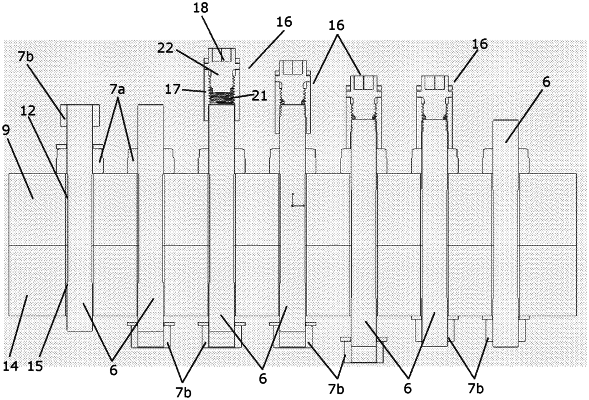| CPC F03D 13/20 (2016.05) [B23P 19/067 (2013.01); E04H 12/085 (2013.01); E04H 12/342 (2013.01); F05B 2230/604 (2013.01); F05B 2260/301 (2013.01)] | 12 Claims |

|
1. A method for erecting a wind turbine tower, the method comprising the steps of:
providing a tower section comprising a lower flange and an upper flange, each flange being provided with a plurality of through-going bolt holes,
providing a plurality of stud bolts and a pair of nuts for each stud bolt of the plurality of stud bolts,
mounting a nut of the pair of nuts to one end of each stud bolt,
orienting the tower section in an upright position with the lower flange below the upper flange,
positioning the plurality of stud bolts in the plurality of bolt holes in the lower flange with the nut of each stud bolt arranged on an upper side of the lower flange,
lifting the tower section to a mounting position on top of another tower section,
forming a flange combination by aligning the plurality of through-going bolt holes formed in the lower flange of the tower section with a plurality of through-going bolt holes formed in an upper flange of the another tower section, while advancing the plurality of stud bolts through the bolt holes of the tower section and the another tower section,
mounting an other nut of the pair of nuts on a lower part of each of the stud bolts,
mounting a socket tool on an end part of one of the stud bolts of the plurality of stud bolts,
adjusting a position of the stud bolt relative to the flange combination, using the socket tool, such that a predetermined portion of the stud bolt is positioned above the lower flange,
moving the other nut into abutment with the upper flange of the other tower section, and
tensioning the stud bolts, thereby securing the tower section to the other tower section.
|